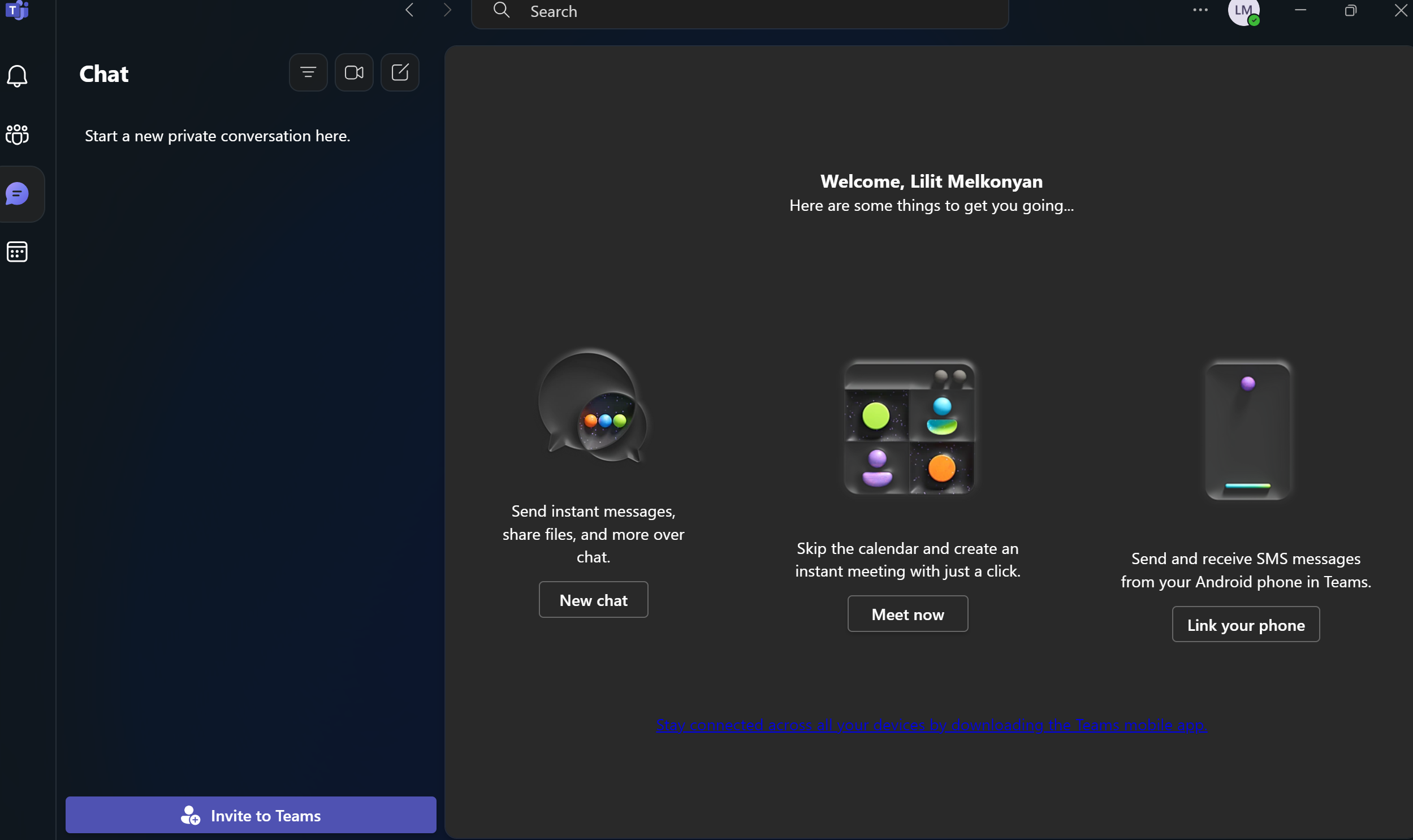Interested in how you can clear Teams cache fast and efficiently? You’re at the right place. From how to clear Teams cache both on Windows and Mac like a pro to how to enhance your Microsoft Teams using Krisp’s AI Meeting Assistant, we’ll explore everything in this guide.
Teams Clear Cache

So, you need a clear Teams cache. Let’s start from the beginning. Microsoft Teams stores temporary data, also called cache, on your device. It helps speed up performance and load content faster.
However, this cache can build up over time and lead to problems. When you clear the cache, Teams removes all outdated files and downloads fresh versions of data or settings.
So, if you’re wondering, “Is it safe to delete Teams cache?” the answer is “Yes.” Deleting the cache removes only temporary files that Teams uses to speed up performance. Your messages, files, or settings don’t get affected.
Teams will recreate the cache files automatically, resolving performance issues without causing data loss.
Why Is It Important to Clear Teams Cache
Here’s why clearing the cache can help:
- Refresh notifications: Stuck notifications can be resolved.
- Fix syncing issues: Sometimes, messages or files don’t sync correctly.
- Improve performance: Teams might slow down due to an overload of cached files.
- Resolve general bugs: This method often resolves cache-related bugs like a missing profile picture or issues with the Teams interface.
The number of daily active users of Microsoft Teams reached 300 million in 2023 from 270 million in 2022. Microsoft Teams’ users are on the rise, so it’s more critical to know how to manage the tool than you might think.
For example, apart from clearing the cache, do you know how to keep Teams status green? The green status shows you’re currently active and engaging with the Teams platform,
Where Is Teams Cache Located?
Before going through the steps concerning how to Clear Microsoft Teams cache, know where to find it. Different operating systems have different locations for these files.
Specifically, the cache is stored in a hidden folder on your device. And we’ll show you how to access these folders on Windows and Mac.
You’ll manually delete specific files in the folder, which will be automatically rebuilt the next time you use Teams. So, let’s move on to the step-by-step process for each system.
Clear Teams Cache Windows 10

To clear the Microsoft Teams cache on Windows 10, follow these detailed steps:
- Quit Microsoft Teams:
- Ensure that Microsoft Teams is fully closed.
- At the bottom-right of your screen, find the Teams icon in the system tray to right-click.
- From the menu, choose “Quit.” This step ensures that no files are used when you try to delete them.
- Open File Explorer:
- Press “Windows Key + E” and File Explorer will open.
- Enable hidden items to see the cache folders. At the top of File Explorer, click the “View” tab and check the box “Hidden items” to do this.
- Navigate to the Teams Cache Folder:
- Move to the File Explorer address bar to type the following path and hit “Enter”:
%appdata%\Microsoft\Teams
- This will open the folder where Microsoft Teams stores its cache data.
- Delete Cache Files:
- You’ll see several folders here. You don’t need to delete the entire folder—just the contents of specific folders. Delete everything inside the following folders:
- Cache
- Blob_storage
- Databases
- GPUCache
- IndexedDB
- Local Storage
- tmp
Note: You can delete the files inside these folders by selecting all the files, right-clicking, and choosing “Delete.”
- Restart Microsoft Teams:
- After clearing the cache, launch Teams again. It may take a few moments for Teams to reload, as it’ll rebuild the necessary cache files as you use the app.
Clear Teams Cache Windows 11
The process for Windows 11 is nearly identical to Windows 10, though the interface looks slightly different. Here’s how to clear the cache:
- Quit Microsoft Teams:
- Right-click the Teams icon in the system tray and choose “Quit.”
- Open File Explorer:
- Press “Windows Key + E” to open File Explorer.
- Under “View,” choose “Show,” and then check “Hidden items” to reveal hidden folders.
- Access the Teams Cache Folder:
- In File Explorer, type the following path in the address bar and press “Enter”:
%appdata%\Microsoft\Teams
- Delete Cache Files:
- Open each of the following folders and delete the contents:
- Cache
- Blob_storage
- Databases
- GPUCache
- IndexedDB
- Local Storage
- Tmp
- Restart Microsoft Teams:
- Reopen Teams. It’ll automatically regenerate new cache files as needed.
Clear Teams Cache on Mac
The Mac process is slightly different because of the macOS file system. Follow these steps to clear cache of Microsoft Teams on Mac:
- Quit Microsoft Teams:
- Close Teams by selecting Teams from the top menu bar, then choosing “Quit” Microsoft Teams. Make sure it’s fully closed.
- Open Finder:
- Tap the “Finder” icon in your Dock, and a new Finder window will open.
- Go to the Teams Cache Folder:
- Press “Command + Shift + G” to open the “Go to Folder” dialog.
- Type in the following path and press “Enter”:
~/Library/Application Support/Microsoft/Teams
- Delete Cache Files:
- Like Windows, you’ll find several folders here. Open each of the following folders and delete their contents:
- Cache
- Blob_storage
- Databases
- GPUCache
- IndexedDB
- Local Storage
- tmp
- Restart Microsoft Teams:
- Open Teams again, and it’ll rebuild the necessary cache files as you use it.
How to Clear New Teams Cache
Microsoft has released a new Teams version with a redesigned interface and enhanced performance. The steps to clear the new Teams cache are slightly different from the classic version:
- Quit the New Teams App:
- Completely close the new Teams app by right-clicking the Teams icon in the system tray (for Windows) or top bar (for Mac) and selecting “Quit.”
- Access the Cache Folder:
- For Windows, use this path in File Explorer:
%localappdata%\Microsoft\Teams
- For Mac, open Finder and use this path:
~/Library/Application Support/Microsoft/Teams
- Delete Cache Files:
- Inside the Teams folder, delete the contents of the following directories:
- Cache
- IndexedDB
- GPUCache
- Restart New Teams:
- Once you’ve cleared the cache, launch the new Teams app. It’ll create new cache files, lensuring smoother performance.
Knowing How to Clear Teams Cache Isn’t Enough: Use Krisp to Enhance Teams Meetings

Now that you know how to clear Microsoft Teams cache, let’s see how you can make your meetings more productive and effective.
The Krisp AI Meeting Assistant is designed with productivity and efficiency in mind. Krisp’s AI Meeting Assistant enhances the quality of virtual communication through Noise Cancellation, Meeting Recording, Transcription, and Summarization.
Krisp’s AI Meeting Assistant Cancels Noise in Real Time
The Krisp AI Meeting Assistant’s Noise Cancellation feature blocks background noise for you and other meeting participants. Users note that Krisp’s noise suppression algorithm seems ten times more powerful than its competitors. As a result, you can enjoy a distraction-free environment for meetings.
Krisp’s AI Meeting Assistant Records Meetings with the Best Audio Quality
Krisp’s Meeting Recording feature automatically records online interactions. So, you don’t need to remember to allow it, which isn’t the case with other meeting assistants. You can save your meeting recordings to revisit and review them later. As a result, you won’t miss any critical discussion points.
Meeting Transcriptions and Summaries
Krisp’s real-time Meeting Transcription capabilities allow users to review conversations and action items easily post-meeting. Thanks to stellar speaker recognition, the Krisp AI Meeting Assistant transcribes Teams meetings with 96% accuracy and summarizes meeting notes in Teams without errors.
So you can focus on the discussion instead of taking manual notes and enjoy increased productivity and enhanced collaboration.
The Krisp AI Meeting Assistant offers excellent cross-platform accessibility: Krisp’s AI Meeting Assistant works with all major videoconferencing platforms like Microsoft Teams, Zoom, and Google Meets.
Moreover, Krisp’s AI Meeting Assistant doesn’t have a lot of bells and whistles and runs on WinOS u MacOS․Krisp. Today, the Krisp AI Meeting Assistant processes 75+ billion minutes of voice conversations monthly, removing background noises, voices, and echoes.
Finally, the Krisp A Meeting Assistant is also known for its user-friendly interface and discreet operations. Krisp’s AI Meeting Assistant runs in the background without interfering with meeting dynamics.
Wrapping Up
Knowing how to clear Teams cache may seem overwhelming, but the process is straightforward. Simply learn the steps on Windows, Mac, and the new app. After clearing Teams in cache, you’ll experience a faster, more responsive Microsoft Teams experience.
Remember that the process doesn’t delete essential data — just temporary files that Teams can quickly regenerate. Importantly, use the Krisp AI Meeting Assistant to take your team’s experience to the next level through exceptional noise cancellation and note-taking.
Frequently Asked Questions
taskkill /f /im Teams.exe
rd /s /q %appdata%\Microsoft\Teams
start Teams
Run this file to clear the Teams cache and restart the app automatically.


